 Le Louvre
Le Louvre Le Louvre
Le Louvre
More paintings
We are now entering my favorite wing of the Louvre, the Sully wing where all the French painting are located.
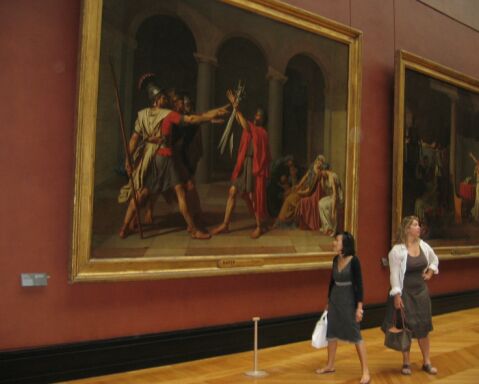
Oath of the Horatii by Jacques Louis David, French painter and one of the central figure of Neoclassic.
|
We are in the period of the wars between Rome and Alba, in 669 B.C. It has been decided that the dispute between the two cities must be settled by an unusual form of combat to be fought by two groups of three champions each. The two groups are the three Horatii brothers and the three Curiatii brothers. The drama lay in the fact that one of the sisters of the Curiatii, Sabina, is married to one of the Horatii, while one of the sisters of the Horatii, Camilla, is betrothed to one of the Curiatii. Despite the ties between the two families, the Horatii's father exhorts his sons to fight the Curiatii and they obey, despite the lamentations of the women. |
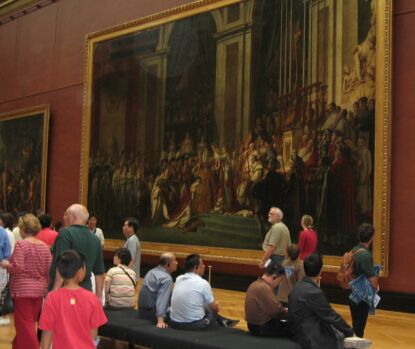
Napoleon's coronation by Jacques Louis David
|
This painting is just gigantic, depicting the coronation of Napolean Bonaparte as Emperor. He is shown taking the crown from Pope Pius VII and crowning himself, symbolizing the fact that he considered himself equal to (or greater than?) the Pope. The painting is extraordinary for its size and also because the painter made sure to depict every person present. Each face is a miniature portrait that is historically accurate. It took David years to complete this canvas. |
 Note how small Kevin and I are, standing next to the painting. This painting is truly gigantic, you have to stand next to it to realize how massive it is. It is one of my favorite painting from the Neoclassic period. |
Auto portrait of Jacques Louis David - 1748-1825 |

La grande odalisque (A female slave or concubine in a harem) by Jean August Ingres (1780-1867).
|
Ingres took this reclining nude to exotic heights with his portrayal of a beautiful concubine in a Turkish harem. Exemplifying the painter’s “sculpturesque style” and superb color sense, this piece is at once sensual and aloof. Ingres studied in Paris under Jacques Louis David in 1796, and at the Ecole des Beaux-Arts; in 1801 he won the Prix de Rome. |
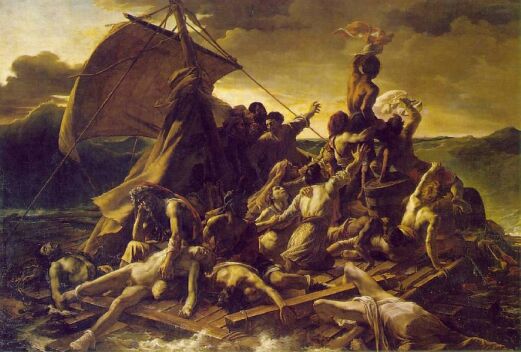
The Raft of the Medusa byTheodore Gericault
|
The ill-fated voyage of the Medusa ship began when it departed from Rochefort to St. Louis in 1816. After striking a sandbar off the coast of Africa, 150 civilians row safely to shore, but the Captain of the ship ordered 140 soldiers and sailors onto a raft (minus supplies) and cut it loose. Only 14 survived from 140. When the story broke out, it created a scandal back in France. Gericault (the painter) was able to talk to three survivors of the raft while researching for his painting. The painting depicts a group of desperate men floating on a few planks of wood, trying to get the attention of a tiny little ship barely visible on the horizon by waving their shirts around. |
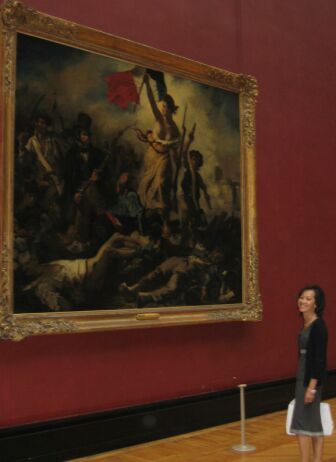
La liberty guidant le peuple (Liberty guiding the people) by Eugene DeLacroix
|
This painting, which is a sort of political poster, is meant to celebrate the day of 28 July 1830, when the people rose and dethroned the Bourbon king. Delacroix took pleasure in portraying himself in the figure on the left wearing the top-hat. Although the painting is filled with rhetoric, Delacroix's spirit is fully involved in its execution: in the outstretched figure of Liberty, in the bold attitudes of the people following her, contrasted with the lifeless figures of the dead heaped up in the foreground, and in the heroic poses of the people fighting for liberty. |
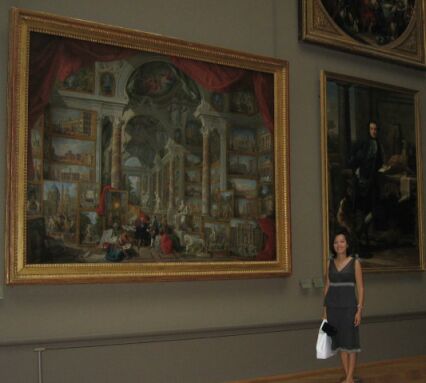
Check this out...... I have a copy of this painting in our home.
Picture gallery with views of Modern Rome by Giovani Pannini


We have spend all morning and we totally exhausted... time to get out and get some lunch..
Next... Troyes
| Home | Travel | Our house | Birthdays | Photo Gallery |